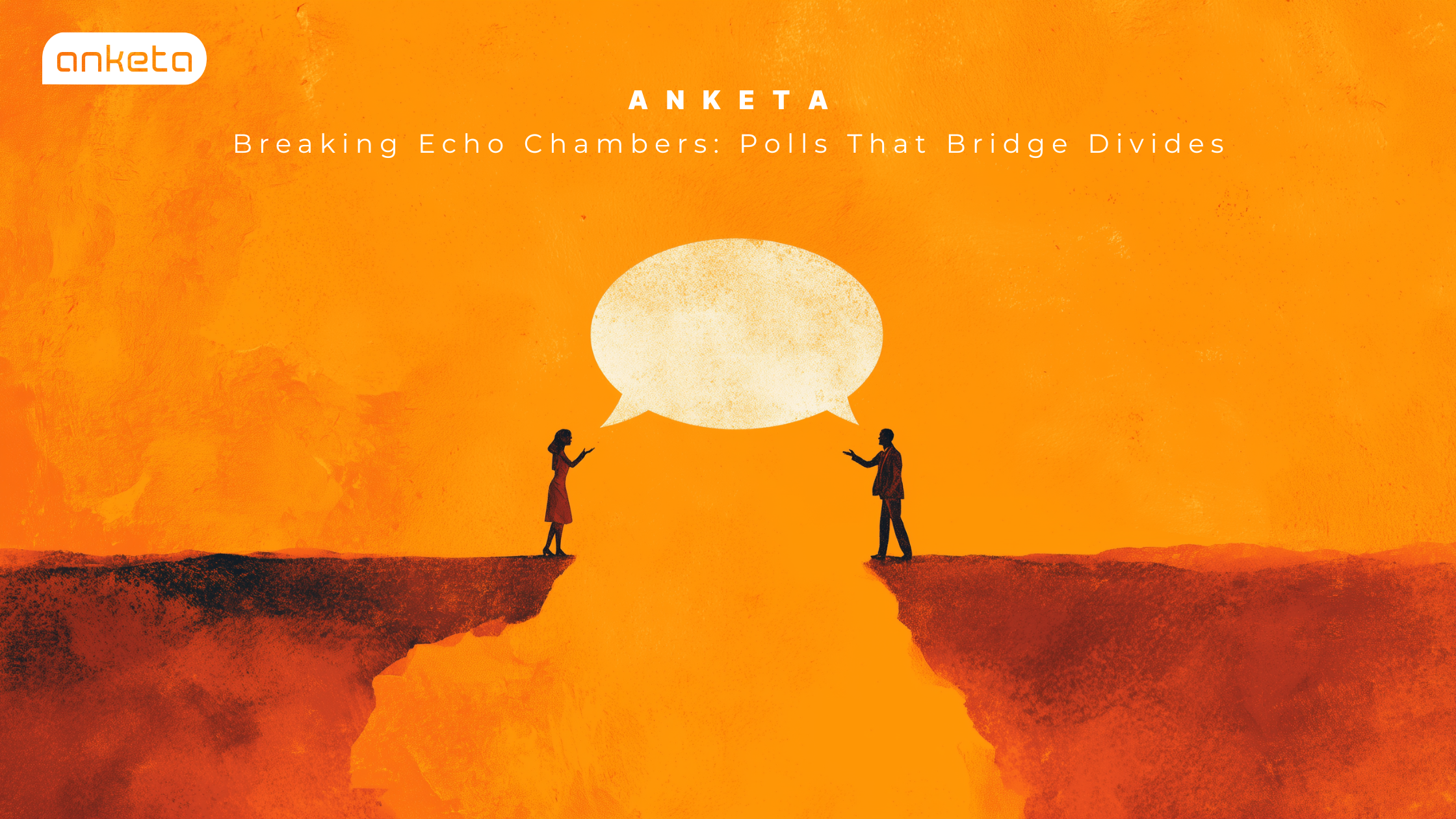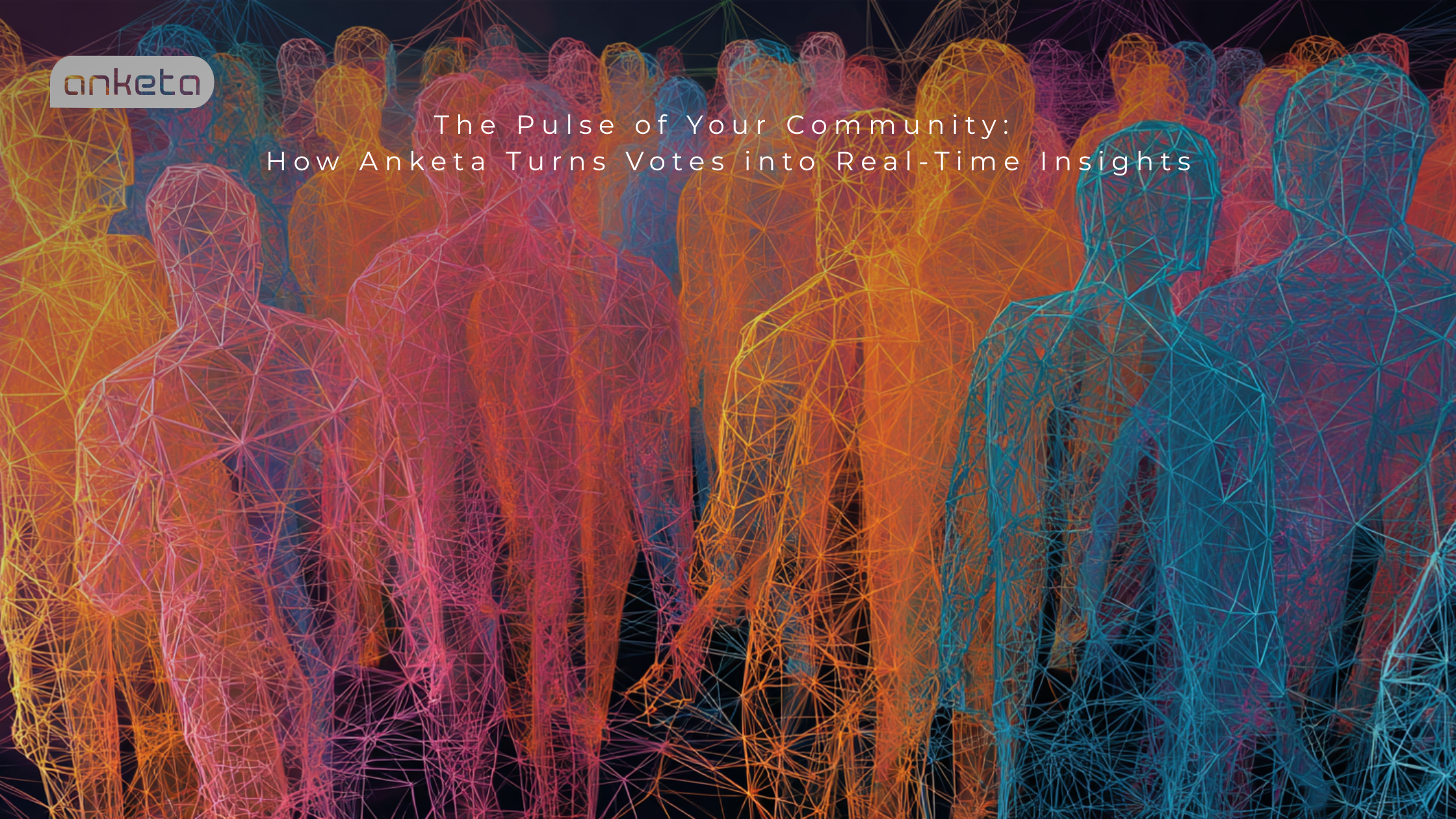In recent years, we’ve seen growing concern over social media’s role in reinforcing echo chambers. These are spaces in which people hear only what they already largely believe, reinforcing preexisting views rather than exposing them to new ones. While the issue is often discussed in political or policy settings, it’s also deeply relevant in everyday social conversation. Even seemingly lighthearted polls, memes, or small debates among friends or interest groups are not immune.
So, how can poll formats help us move from echo chambers toward constructive debate? What makes a poll more than just “which coffee flavor do you prefer,” and instead an opportunity for exposure, reflection, and perhaps even empathy?
Echo Chambers and Why They Matter
Research has shown that social media platforms tend to amplify homophily (the tendency to associate with people similar to you) and filter content so that people mainly see what aligns with their beliefs. In a comparative study of major platforms, scholars found that Facebook and Twitter exhibit strong echo chamber effects. Users cluster with likeminded peers and receive information biased toward their own views. This is strongly tied to algorithmic curation (what content the platform shows you), but also to user behavior: who you follow, what you click, and how you engage.
Why is this a concern even in casual settings? Because echo chambers reduce the chance for meaningful exposure to different perspectives. They can heighten polarization, promote misinformation, suppress awareness of nuance, and encourage overconfidence in one’s own side.
How Polls, Discussion, and Balanced Framing Can Help
While polls are simple in form, their potential is higher when designed with intention. Here are some of the ways polls (especially combined with discussion) can mitigate echo chamber effects and foster more constructive engagement:
Expose people to viewpoints gently A poll that includes options representing different perspectives (even minority ones) nudges participants to see that there are other ways of seeing something. It does so nonthreateningly; people click, see the results, maybe comment.
Balanced framing helps avoid bias
If the question is loaded (“Why is X always wrong?”) or options are skewed, the poll reinforces existing bias. But if the framing is neutral or even acknowledges multiple valid angles, it invites curiosity rather than defensiveness.
Anonymous vs. targeted participation
Anonymous polls lower the social cost of expressing dissent or an unconventional view; targeted polls (e.g., among friends or in a group of mixed backgrounds) give context and relevance. Both have roles. Anonymous polls can surface hidden views, while targeted ones can build trust through shared identity even while protecting dissent.
Channels for postpoll discussion
Just seeing poll results is often not enough. Discussion helps people understand why others chose differently. It can humanize the “other side,” revealing reasoning, shared values, or misunderstandings. Where possible, polls should be accompanied by comment threads, or the platform should allow for polls that are not just two answers when needed.
Inclusivity and representation
Ensuring that poll participants reflect diversity (in thought, background, experience) matters; otherwise, polls risk being illustrative only of a homogeneous subgroup. Giving space for “other/not listed” options or freetext responses can help bring in perspectives not anticipated by the poll maker.
Low stakes but meaningful
Fun or casual polls (favorite foods, preferences, hypothetical scenarios) may seem trivial, but they build habits of considering others’ viewpoints and comfort with difference. When stakes are low, there is more openness; the norms of respectful disagreement can strengthen over time.
How ANKETA’s Tools Align with Constructive Debate
Given those general principles, here’s how ANKETA’s features contribute to helping bridge divides rather than deepen them.
- Multiple poll types (single choice, multiplechoice, ranked, etc.): Different styles allow nuance. Ranked preferences force tradeoffs; multiple choice shows complexity. This helps people realize that issues aren’t always binary. It surfaces shades of opinion, which weakens “us vs. them” framing.
- Ability to conduct polls in different channels: You can choose a setting that matches the audience (e.g., mixed groups vs. specific interest circles). Targeted or mixed groups can bring together people who don’t always interact; public settings can show the range of responses outside one’s immediate circle.
- Options for anonymous responses: Anonymity lowers fear of judgment. People who might otherwise selfcensor can voice an opinion. This balance helps with inclusion and honest signaling.
- Balanced option framing tools: Poll creators can design questions carefully. The “other” or freetext response options allow pollsters to capture unexpected views. Moderation ensures a respectful tone.
Toward More Constructive Debate: Best Practices
Do you want to try ANKETA for yourself? Building on what research says and the tools ANKETA offers, here are some practices for anyone making polls who wants to help bridge divides and foster thoughtful dialogue:
- Start with a neutral question: Avoid loaded language; give room for nuance.
- Include unexpected options: Don’t assume you know all the possible viewpoints. Let respondents bring in “other” ideas.
- Encourage explanation: When possible, allow followups or comments.
- Use mixed or crosscommunity audiences: Polls that transcend one echo chamber are more likely to reveal divides but also common ground.
- Reflect and iterate: After seeing results and reactions, think about what worked and what didn’t. Maybe certain framings yielded more polarized responses; maybe certain topics are especially sensitive and need extra care.
Embrace ANKETA’s Unique Polling Environment
Echo chambers are real, and they matter—not just for political polarization or global crises, but for how we understand each other in everyday life. But they are not inevitable. Simple tools like polls, when done well, can help foster exposure to diverse viewpoints, encourage reflection, and create spaces for respectful disagreement.
Platforms that give people flexible poll types, anonymity, balanced framing, different audience channels, and occasional opportunities for discussion of their vote are especially wellpositioned to help. Here’s to more polls that connect rather than divide.
Join the ANKETA BETA today. Turn your opinions into currency, your debates into data, and your likes into legacy. The future isn’t just digital—it’s democratic.







